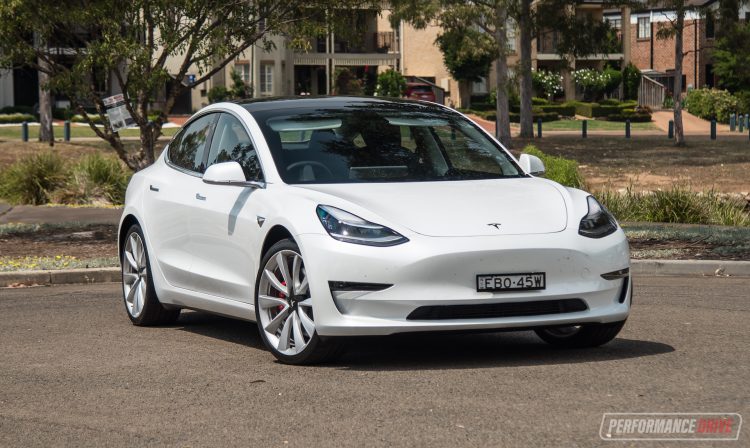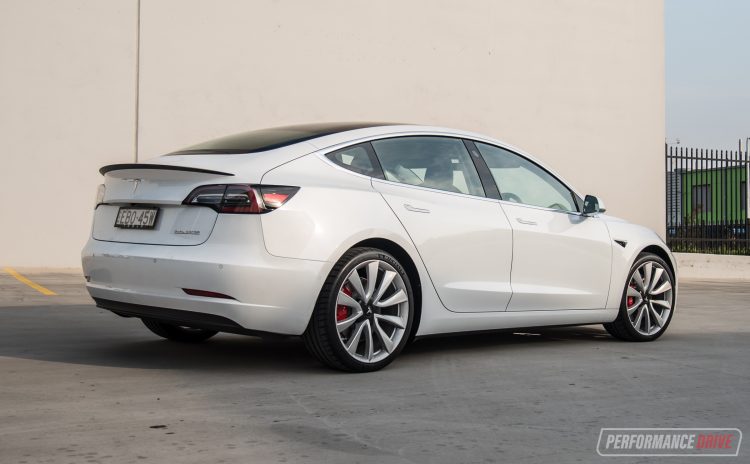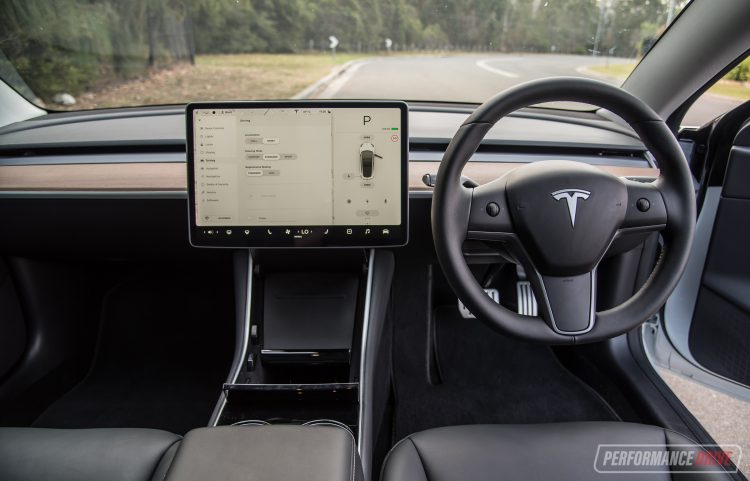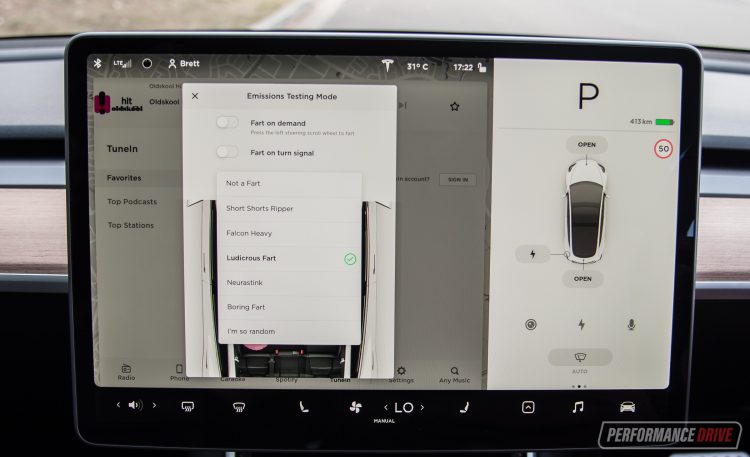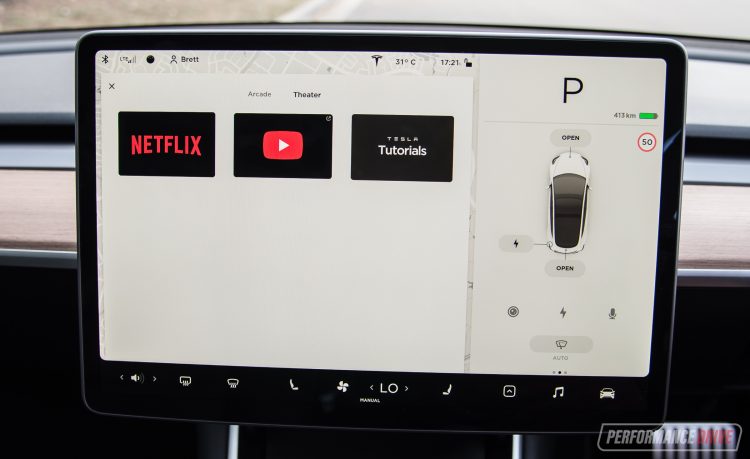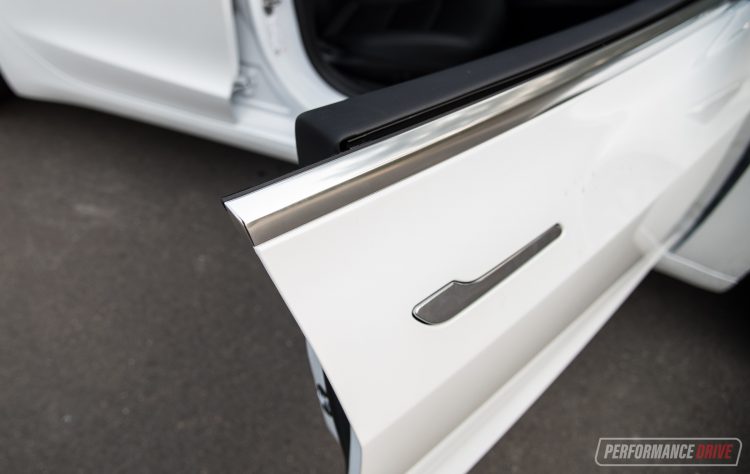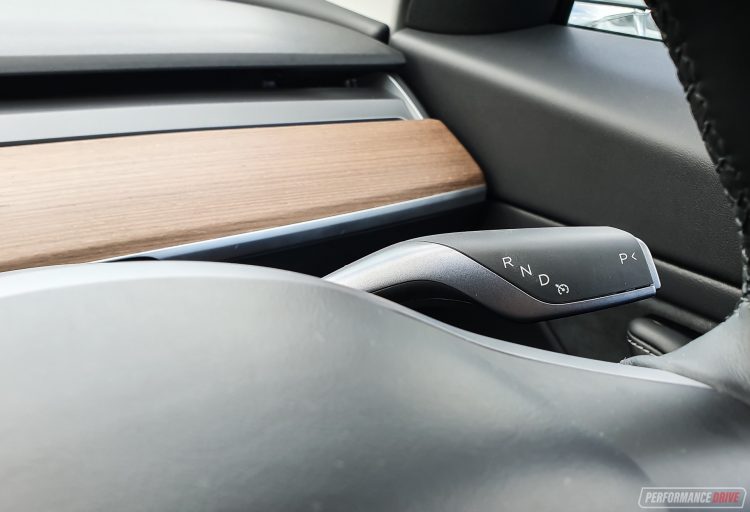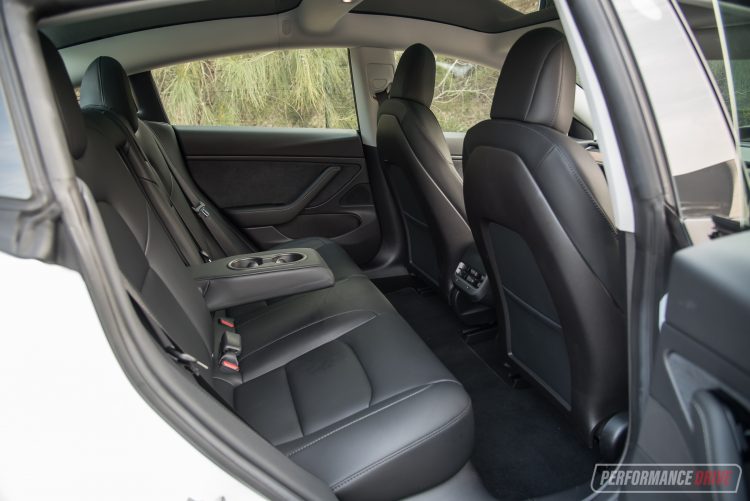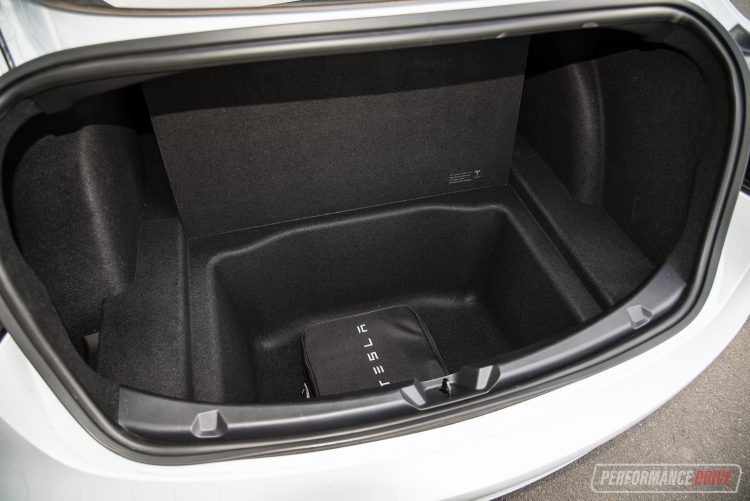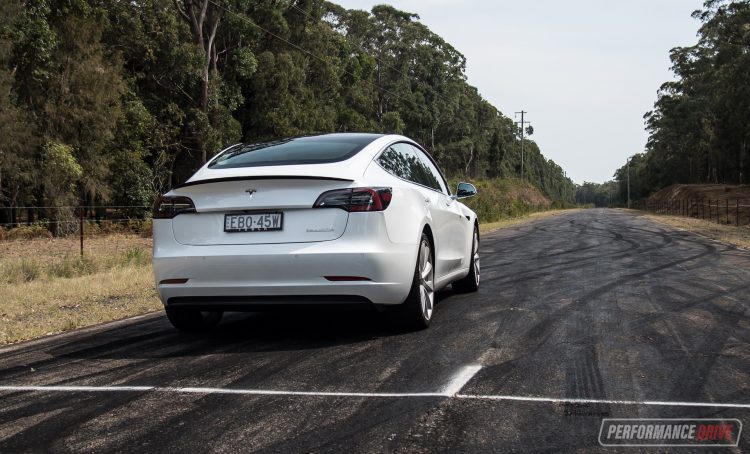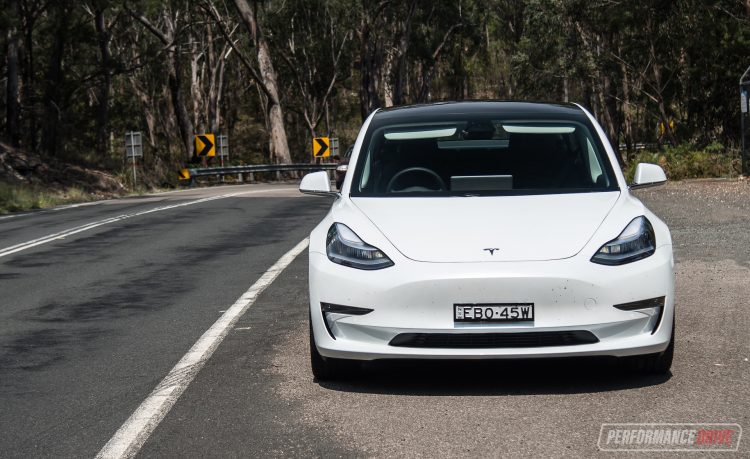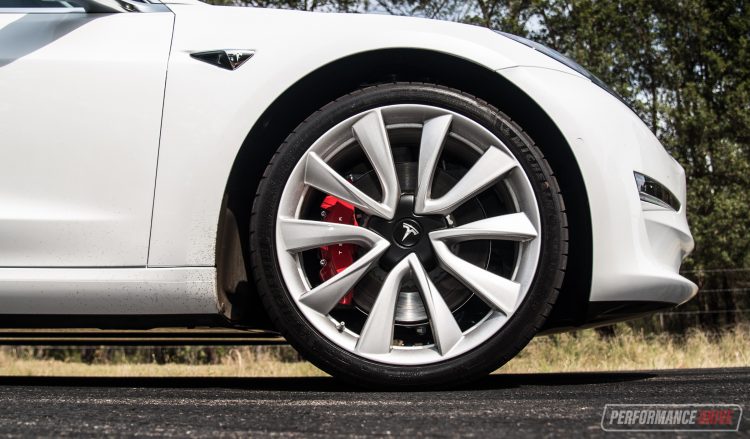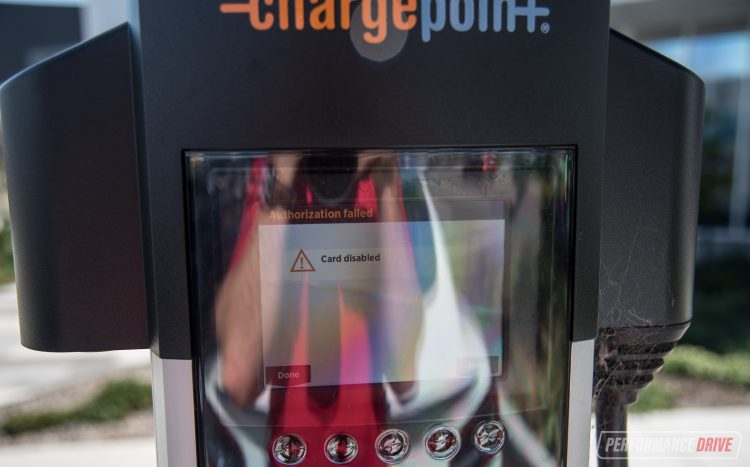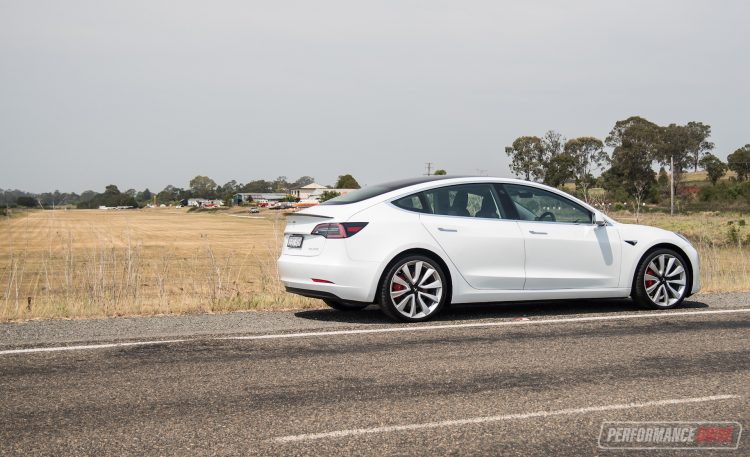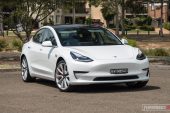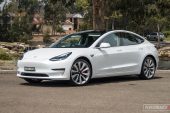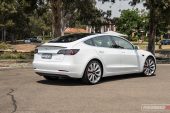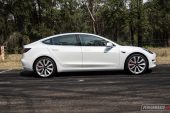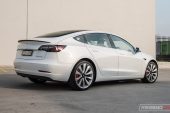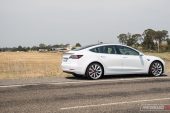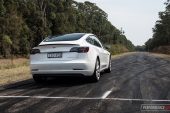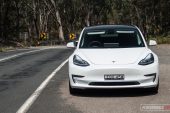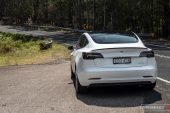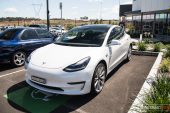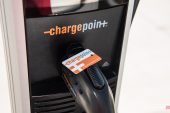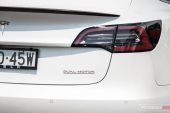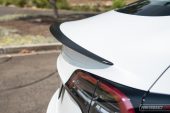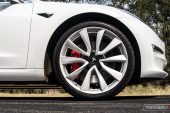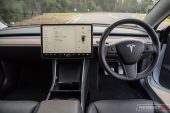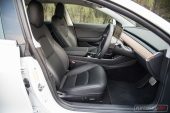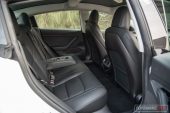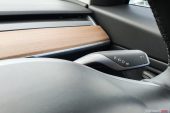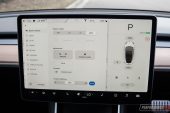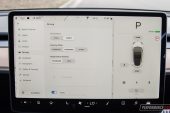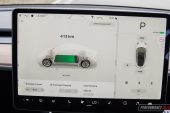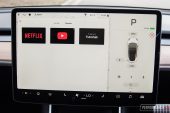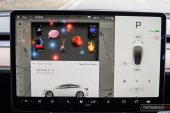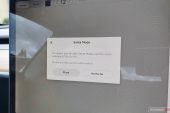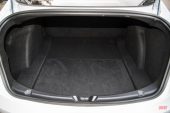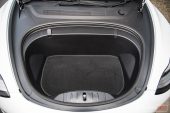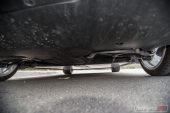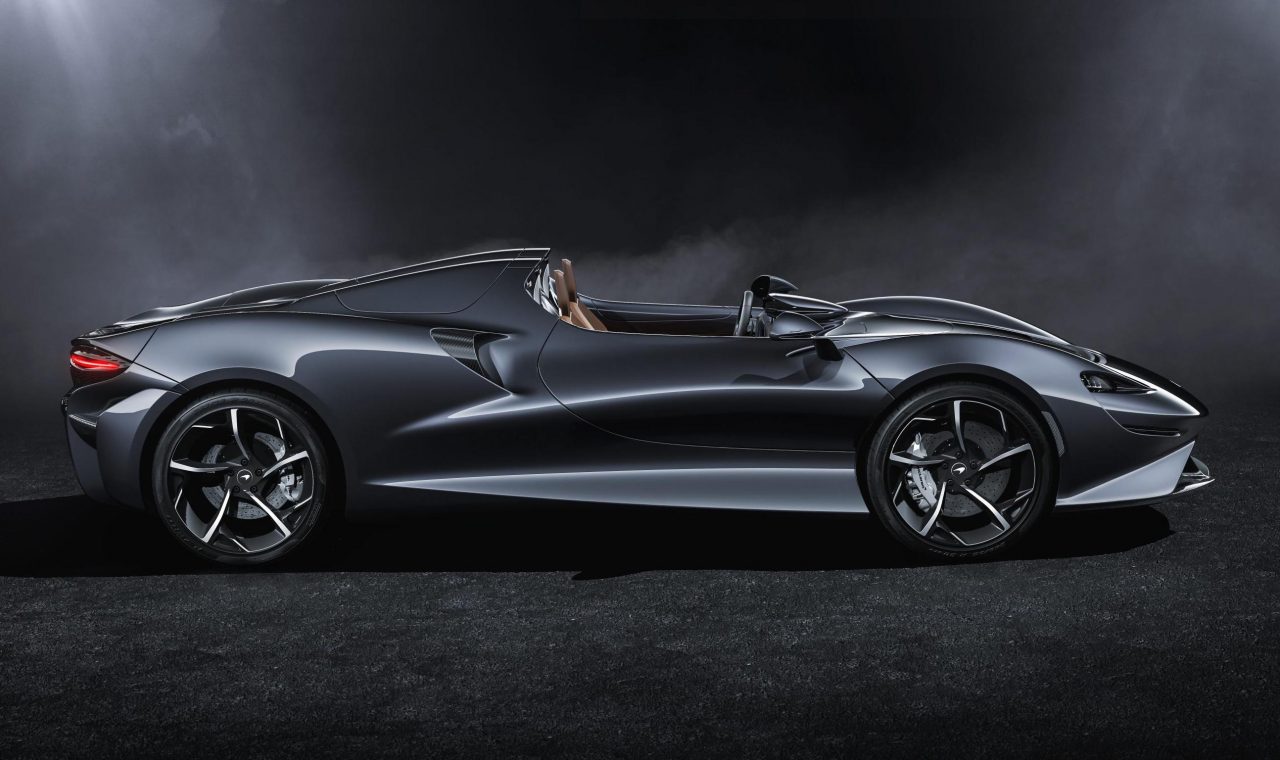This is the quickest-accelerating premium medium-size sedan currently on the market. It’s so bloody fast, it’ll keep up with some supercars in a straight line. But is the Tesla Model 3 Performance a one-trick pony? Let’s take a closer look to see if there are other big attractions, and of course test out that 0-100km/h sprint.
Joining the market as the only fully electric premium mid-size sedan, the Model 3 is a very unique vehicle. It goes up against the likes of the Audi A4, BMW 3 Series, Mercedes C-Class, and Jaguar XE and co, which is a fairly difficult market to crack. Especially as some models are extremely well established and some even pioneered the segment. Tesla is off to a superb start though by presenting these two major headlines (acceleration and exclusivity).
You might remember back to 2016, when people were literally lining up out the front of Tesla shops to put their order in for the Model 3. An incredible 180,000 orders were placed around the world in the first 24 hours. After various production delays and other teething issues typical of a relatively new company, the Model 3 is finally being produced in right-hand drive and deliveries for Australians are fast rolling in.
There are three versions available to order in Australia, spanning from the Standard Plus (460km range), the Long Range AWD (620km), to the top Performance AWD (560km). All are built in the USA, with starting prices running from $67,900, $89,514, to $98,624, respectively (excluding on-roads).
2019 Tesla Model 3 Performance – THE SPECS
[column width=”47%” padding=”6%”]Battery capacity: 75kWh, front and rear electric motor
Output: 353kW (combined)
Transmission: Single-speed auto
Drive type: All-wheel drive
Wheels: F & R: 20×8.5, 235/35
ANCAP: Five stars
Tare weight: 1856kg
Power-to-weight: 5.25:1 (kg:kW)
Official range (NEDC): 560km[/column] [column width=”47%” padding=”0″]0-60km/h: 2.06 seconds*
0-100km/h: 3.71 seconds*
0-200km/h: 14.61 seconds*
60-110km/h: 2.18 seconds*
1/8 mile: 7.80 seconds at 153.8km/h*
1/4 mile: 12.04 seconds at 185.6km/h*
Max acceleration: 1.291g
100-0km/h braking: 2.67 seconds at 34.35 metres*
Max deceleration: -1.224g
Priced from: $98,624[/column][end_columns]
* Figures as tested by PerformanceDrive on the day. Factory claims may be different
2019 Tesla Model 3 Performance – THE PACKAGE
The packaging is really amazing. You might not love it at first but you can’t deny how different and simple the entire cabin is. After years of very similar layouts and familiar controls in cars, the Model 3 is much like its bigger brother, the Model S; starting with a clean sheet of paper and breaking the trends.
It doesn’t really borrow anything from traditional designs or layouts. Well, the driver’s seat is obviously on the right-hand side and there are five seats overall. But the way the controls are presented to you and the sense of spaciousness is very intriguing.
Since the battery pack is mounted under the floor, within a sandwich-style chassis, and with dual motors mounted at each axle leaving no centre drive shaft, the floor is totally flat. Even this alone creates a really open and airy atmosphere like no other. In comparison to the main rivals, the Model 3 easily wins for space and simplicity.
A lot of the simplicity is thanks to a completely buttonless dash and centre console. All model Model 3s come with a massive 15-inch touch-screen interface on the dash. This isn’t just a media interface. It’s also where you can adjust the power front seats, adjust the side mirrors, climate vent direction, and even check you current speed.
Thanks to recent updates you can also browse the internet, check out Google Maps in street view, and even log on to Netflix and watch a movie or favourite TV show. We’re not kidding. In fact, we could probably do a full review just on the touch-screen itself. It is insanely vast in both size and functionality.
Speaking of kidding, it seems Tesla does have quite a big sense of humour. There are various hidden ‘Easter eggs’ within the touch-screen that you can find and unlock. Our favourite is the Emissions Testing Mode, which is a fart sound emulator, in stereo. You can prompt a fart to sound in any corner of the cabin, and you can even choose the fart type. Seriously. Ludicrous Fart, Neurastink, Short Shorts Ripper; these are all important fart sounds that you can investigate. You can even set it so a fart blurts out every time you hit the indictor stalk.
There’s also a range of online-based radio and media apps, and some classic video games to play. However, most of this entertainment, including Netflix, is only available when the car is parked. We get the feeling Tesla has implemented these to keep passengers happy during times of recharging the car’s battery.
To be honest though, instead of spending time installing gimmicky 1980s arcade games into the touch-screen, we think Tesla should have concentrated on improving the build quality in some areas. Obviously Tesla is still a young carmaker and doesn’t have the production experience of many of the rivals, because there a number of noticeably misfit fixtures, excessive panel gaps and other build-related concerns.
The amount of rattles and creaks in the cabin we heard with this test car when driving was simply unacceptable. Especially for a $100k vehicle. We had at least four irritating noises going on. Of course, being an electric vehicle the silence doesn’t help. There is a chance some of the rattles would otherwise be drowned out with the sound of a combustion engine in the rivals.
Evidence of poor production experience isn’t just down to the build quality. We also think there are some design issues. For example, we couldn’t help but (painfully) notice the front doors feature an extremely sharp corner, particularly if the window is down.
Also, the column-mounted gear selector operates the cruise control, but there are no symbols on it that suggest which way to pull or push for activation or cancellation. Are you accidentally selecting reverse gear? Who knows. Let’s try it and see. This is a little scary at first but you’d obviously get used to it with ownership.
Yes, we are nitpicking a bit but we feel other manufacturers wouldn’t let these little issues slip through to production, perhaps due to larger teams of engineers and quality control staff waving more red flags during the development process. Over time we’re sure Tesla will improve in this area.
The cabin decor and mood is subdued and conservative, and almost sterile, while the driver’s seat certainly isn’t as intimate or cosy as the combustion rivals. On that note, it’s a shame the Performance variant doesn’t offer any flamboyant flourishes in the cabin, such as unique bucket seats or splashes of brighter colours to create some sense of occasion.
In terms of passenger space and comfort though, this is really impressive. Think of it as like a modern transport capsule that very efficiently gets you and your friends to where you want to go. And all of their belongings, actually, because there are two boots. The one in the back has a large under-floor cavity for extra storage.
2019 Tesla Model 3 Performance – THE DRIVE
It’s fast. Flatten the throttle and hold on, because this will push you deeply into the back of your seat. The Performance variant is all about straight-line acceleration. With a pair of electric motors, one for each axle, combining to produce a whopping 353kW, this is one of the most powerful sedans in the class. And thanks the immediate power and torque they disperse, all of the common sprints are tackled in record time.
Tesla says it’ll do 0-100km/h in 3.4 seconds. This is adopting the rollout method which subtracts the first foot from the sprint to replicate drag strip conditions. Using our Racelogic Vbox Sport and access to a private road (without rollout method), we clocked a best 0-100km/h in 3.71 seconds, 0-200km/h in 14.61 seconds, and the quarter mile in 12.04 seconds at 185.6km/h. You won’t find any other mid-size sedan on the new car market in Australia that can better these times, especially across 0-100km/h.
Okay, so we’re all convinced and it’s proven this is an extremely quick car in a straight line. But what about the corners? We’re afraid to report the excitement and engagement isn’t anywhere near the same level. Although, it does depend on where you stand. If you’re looking at the Model 3 Performance as a proper performance model, a competitor to the Audi RS 5, BMW M3 and Alfa Romeo Guilia Quadrifoglio and so on, like we are, then no. It is not as accomplished or as committed as these. Not even close. In fact, it doesn’t come close to the semi-performance rivals either, like the BMW 330i M Sport and Jaguar XE S.
The suspension is comfortable and absorbs bumps really well, but this means it isn’t as tied down as a performance model should be. During our vigorous mountain road tests we experienced some nervousness and vagueness at anything above 80 per cent heated driving. Precise real-time feedback from the steering isn’t there. Coming hot into a corner and hard on the brakes, the car seems to float momentarily and there are split-second periods where you’re not completely sure what the chassis and tyres are going to do next. You don’t get this in the performance rivals. Instead, there is a constant and encouraging communication between man and machine.
Below 80 per cent, it turns in really nicely and smoothly, and the accelerative grip is sensational. Even with all of that power readily available as quick as you can flex your ankle, there is simply no wheelspin or oversteer or understeer as a result of power-down alone. There is a Track mode which disables the stability control, however, the intensely relentless all-wheel drive system reacts and distributes the power to the right areas before anything hazardous happens. Well, that’s on the public roads. You could no doubt really throw it around on a track to discover more.
If you’re looking at this as a conservative and rather dignified sedan that has a great party trick, then yes. The handling feels good and totally suitable for this target audience. As mentioned, the ride isn’t bone-shattering, which will appeal to a wide market compared with those hardcore Euro rivals. A moderate steering setup also means the car isn’t fidgety or busy, so you can relax and cruise.
In either scenario, the massive multi-piston brakes pull up the Model 3 time and time again with complete confidence, and with excellent resistance to fade. That’s a good thing particularly for this latter buyer type, because it means even a novice driver can quickly pull the car up after all of that savage acceleration.
Stepping away from the whole ‘Performance’ aspect, you might be wondering how it drives in normal situations. And if so, apologies on our part. A car with 353kW and a 0-100km/h claim of 3.4 seconds, to us, are the hallmarks of a sports car. We can get carried away assessing it as so.
With a full charge you have an NEDC-rated range of 560km. In the real world, with a few catapulting sprints away from the traffic lights for your amusement, you could expect a range of about 400-450km. There are now a heap of charging stations around Australian capital cities and common stop-over points in between. The Type 2 socket is fairly common now, too.
However, during our test we encountered some issues with charging at said stations. At a ChargePoint our card simply wasn’t recognised, despite being activated – it kept saying “card disabled”. We ended up ringing the provider and wasting 10-15 minutes of the day trying to get to the bottom of the issue. In the end we were told to go to the next ChargePoint location.
This isn’t a Tesla issue, of course. But it is something you need to consider if you’re looking at making the transition to electric. We find some of the apps are also incorrect in terms of the socket types, and some stations seem to be noted as down or faulty quite frequently. If you own the car you can obviously charge it at home.
With a standard socket it’ll take over 24 hours to fully charge from empty. But daily commuting, under 100km per day, means you can top it up overnight. You can also have a higher output wallbox installed at home for quicker charging. So, in reality, you might not actually use the public stations all that much unless you’re doing some travelling.
Overall, we wouldn’t categorise this as a proper driver’s car, despite being labelled as the Performance variant. It seems like Tesla is more excited about 1980s sci-fi references and humorous gimmicks than genuine driving enthusiasm. Yes, it is definitely fast in a straight line. The quickest in the class, no doubt. But the lack of driver connection between everything from the cabin atmosphere to the chassis dynamics, it’s the petrol-powered rivals that continue to win our hearts in this area.
2019 Tesla Model 3 Performance – THE VIDEO
2019 Tesla Model 3 Performance – THE VERDICT
The Performance variant is a very confusing vehicle to me. On one hand the acceleration is mind-bending, suggesting a true performance machine. But in terms of enthusiastic driving, it ends there. The rest of it feels like you’re driving around in a laptop on wheels. A practical and roomy one, yes, but a pretty boring one. For a ‘performance’ model we’d expect lots more passion and personality.
In that respect, it doesn’t get me excited as a driving enthusiast. A lot of the car’s controls and the general demeanour seems a bit snobbish toward drivers actually. It’s like the car is saying, ‘I don’t actually need a driver, but you’re welcome to sit in here if you like’. There’s nothing especially focused at or inviting to a driver, in other words. Even an instrument cluster is nonexistent. Personally, this makes me sad. Is this the future? Are sports sedans going to turn into nothing but modern transport capsules?
If you are a bit of a geek and can’t get enough of the latest trends and technology, this is obviously right down your alley. You’ll love it. All of the hidden Easter eggs and the crazy-big touch-screen will leave you frothing at the mouth. In that case, if you want a very practical mid-size premium sedan that uses no petrol and is filled with fun gimmicks and tech, we’d suggest going for the Long Range variant. You can save about 10 grand and enjoy the full 620km range.
[column width=”47%” padding=”6%”]PROS:
– Quickest-accelerating car in the class
– Spacious interior, big boot
– Comprehensive and user-friendly 15-inch touch-screen
– Low running costs
– 560km range (NEDC)
– Smart autopilot system and industry-leading active safety tech
[/column] [column width=”47%” padding=”0″]CONS:
– Aside from whopping touch-screen, interior is fairly bland for a $100k car
– Concerning build quality in some areas
– Not as sharp as established petrol rivals in the corners
– Lacks passion and personality
– Lots of time-wasting gimmicks; is this a car to drive or just sit in?[/column][end_columns]
As always, if you’re thinking about buying a new car don’t forget to click here to speak with our car buying specialists.
